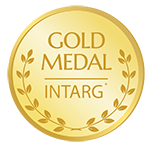Lista wynalazków
Prezentacja wynalazku
ZoP RESEARCH OF ADSORPTION CAPABILITY OF DYES BY MODIFIED-TIO2 BY ADSORPTION PHOTOCATALYTIC TECHNIQUE
autorzy: DINH HONG KIEN, Class 10D5, UEd High School of Education Sciences, University of Education, Viet Nam National University.
First and foremost, advanced oxidation process using photocatalysts has been proved to be a promising method for treatment of wastewater contaminated with dyes. TIO2, an inexpensive and nontoxic material, has been propagated for use as a photocatalyst in water purification-related fields. A simple technique to upgrade both the adsorption limit and photocatalytic action of TiO2-based material was reported . From that point forward, the mesoporous TiO2 surface was joined with carboxylate gatherings and carbonaceous species at high temperature. Then, at that point, the mesoporous TiO2 was doped with nitrogen dopants. Properties of the as-integrated TiO2 were described by 6 types of investigation. To wrap things up, the removal efficiency for 20 mL of methylene blue 10 mg/L was obtained at 90 % after 10 minutes of visible light irradiation. In the morphology, we present 2 types of TiO2. The first one is pristine and the second one is modified. looking at the figure, The pristine surface was made up of clusters of nano- up to micro-scaled particles. As a result the modified TiO2 showed a nonuniform distribution of clusters of rod-like nanostructures (140 – 362 nm in width and 0.7 – 5.0 μm in length) on the surface. When it comes to the functional groups, we depicted several structures of modified TiO2. The modified TiO2 showed a capability to be an effective adsorbent and a photocatalyst for removal of methylene blue from aqueous phase under visible light. Moreover, the adsorption ability was attributed to high surface area and functional groups, while the photocatalytic activity to carbonate species and heterogeneous phases.


Giełda wynalazków
Nagroda
SPECIAL AWARD OF EUROINVENT 2022, ROMANIA
Medal

Złoty Medal
Ochrona własności intelektualnej
Know how
poziom gotowości technologicznej
TRL 4 skala laboratoryjna







